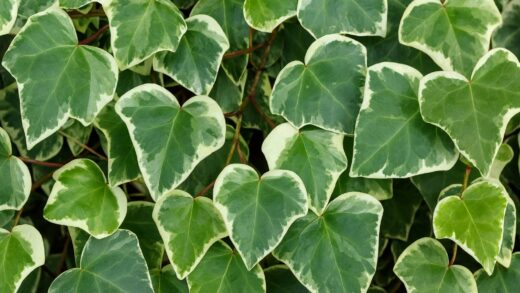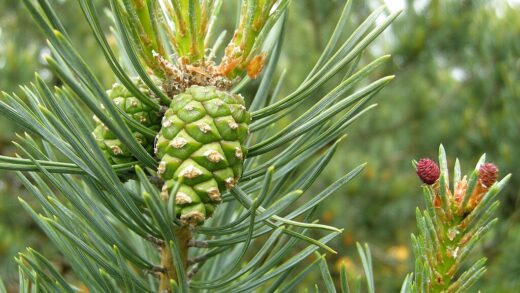Pruning is a vital horticultural practice that plays a multifaceted role in the health, vigor, and aesthetic appeal of the bouvardia flower. Far from being a mere cosmetic exercise, strategic cutting back and shaping encourages the plant to develop a strong, bushy framework, stimulates the production of new growth, and, most importantly, maximizes its flowering potential. An unpruned bouvardia can become leggy and sparse, with flowers only appearing at the tips of long, woody stems. By understanding the principles of when and how to prune, you can guide the plant’s energy towards creating a compact, well-structured specimen that is covered in a profusion of its beautiful, fragrant blooms season after season.
The primary reason to prune bouvardia is to encourage branching. These plants produce their flowers on new growth, specifically at the tips of the stems. When you trim a stem, you remove the apical bud, which is the dominant growing point that produces hormones to suppress growth further down the stem. Once this bud is removed, the lateral (side) buds along the stem are stimulated to grow, resulting in multiple new branches. Each of these new branches will then have the potential to produce a flower cluster, effectively multiplying the plant’s blooming capacity.
Pruning also serves to maintain the plant’s shape and size, which is especially important for container-grown specimens. Over time, bouvardia can become overgrown and unwieldy. A regular trim helps to keep the plant compact, tidy, and well-proportioned to its container. This not only improves its appearance but also ensures that light and air can penetrate into the center of the plant, which helps to promote healthy foliage throughout and reduces the risk of fungal diseases that can thrive in stagnant, humid conditions.
The timing of your pruning activities is critical to achieving the desired results. The main, structural pruning is best performed in the early spring, just as the plant is emerging from its winter dormancy and beginning to show signs of new growth. This “hard prune” sets the stage for the upcoming season. Throughout the summer growing season, a lighter form of pruning, known as pinching or tipping, can be done to further encourage bushiness. Additionally, the practice of deadheading, or removing spent flowers, is a continuous form of pruning that redirects the plant’s energy towards producing new blooms.
Before making any cuts, it is essential to ensure that your pruning tools, whether they be shears, scissors, or a knife, are clean and sharp. Sharp tools make clean cuts that heal more quickly and are less likely to crush the plant’s delicate tissues. Cleaning your tools with rubbing alcohol or a dilute bleach solution before and after use helps to prevent the spread of diseases from one plant to another. This simple act of hygiene is a fundamental aspect of responsible pruning.
More articles on this topic
The main spring prune
The most significant pruning a bouvardia will receive during the year should be carried out in the early spring. This is the ideal time as the plant is just breaking its winter dormancy and has a full store of energy in its roots, ready to fuel a vigorous flush of new growth. This hard pruning is foundational for establishing a strong, well-branched structure for the upcoming flowering season. Waiting until the plant has produced significant new growth before pruning is inefficient, as it wastes the energy the plant has already expended.
For this main prune, do not be timid. Bouvardia responds very well to being cut back hard. Using your clean, sharp pruning shears, you should aim to reduce the overall size of the plant by at least one-third, and up to one-half. Examine the plant’s structure and cut back all the main stems. Make your cuts about a half-centimeter above an outward-facing leaf node or bud. Cutting above an outward-facing node encourages the new growth to grow outwards, helping to create an open, uncluttered shape.
During this process, you should also remove any wood that is dead, damaged, or diseased. Dead stems will be dry and brittle and will not have any green tissue under the bark. Also, remove any weak, spindly stems or any branches that are crossing and rubbing against each other. The goal is to create a framework of strong, well-spaced branches that will form the basis of the plant’s shape for the season. This thinning out of the center of the plant is crucial for improving air circulation.
After completing the hard prune, this is an excellent time to repot the plant if it needs it and to provide its first dose of fertilizer for the season. The combination of fresh soil, new nutrients, and the stimulation from pruning will encourage the bouvardia to burst forth with a multitude of new, strong shoots. These new shoots are the ones that will carry the summer’s display of flowers, so this spring pruning is a direct investment in the quality and quantity of your blooms.
More articles on this topic
Pinching back for bushiness
Pinching, also known as tipping, is a technique of light pruning that is performed during the active growing season to promote a denser, bushier plant. While the main spring prune establishes the primary framework, pinching refines it by encouraging even more lateral branching. This technique is particularly effective on the young, soft growth that emerges in late spring and early summer. The more branches a bouvardia has, the more potential sites there are for flowers to form.
The process of pinching is simple and can often be done with just your fingertips, although using a small pair of clean scissors ensures a neater cut. Identify the new, growing shoots on your plant. Once a shoot has developed a few sets of leaves, simply pinch or snip off the very top tip of the shoot, removing just the top bud and perhaps the first tiny pair of leaves. This removal of the apical bud signals the plant to activate the dormant buds located at the base of the remaining leaves further down the stem.
This practice should be started when the new spring growth is about 10-15 centimeters long. After the initial pinch, the stem will typically produce two new side shoots from the nodes just below where you made the cut. You can then allow these new shoots to grow and develop a few sets of leaves before pinching their tips as well. This process can be repeated a couple of times during the early part of the growing season to create a very full, multi-stemmed plant.
It is important to stop pinching the plant by mid-summer. This is because the plant needs time for the newest set of shoots to mature and develop flower buds. If you continue to pinch too late into the season, you will be constantly removing the very growth that is supposed to produce the flowers. As a general rule, cease all pinching about six to eight weeks before you expect the plant to be in full bloom. This allows the plant to transition its energy from vegetative growth to flower production.
Deadheading to promote continuous blooming
Deadheading is the horticultural term for the removal of spent or faded flowers from a plant. This is one of the most important and rewarding maintenance tasks for a bouvardia owner, as it has a direct and immediate impact on prolonging the blooming period. The primary biological purpose of a flower is to produce seeds to ensure the continuation of the species. Once a flower is pollinated and begins to fade, the plant diverts a huge amount of energy into developing those seeds.
By removing the old flower clusters before they have a chance to set seed, you effectively trick the plant. It senses that its reproductive mission has been unsuccessful and is stimulated to produce more flowers in another attempt to create seeds. This redirects the plant’s energy away from seed production and back into the formation of new buds and blooms. The result is a plant that continues to flower prolifically for a much longer period than it would if left to its own devices.
The process of deadheading a bouvardia is straightforward. As soon as a flower cluster begins to look faded, wilted, or discolored, it should be removed. Follow the stem of the spent flower cluster down to the point where it meets a larger stem or a set of healthy leaves. Using clean scissors or pruning shears, make a clean cut at this junction. This not only removes the unsightly dead flower but also encourages new growth from the node just below the cut.
Deadheading should be done regularly throughout the entire flowering season. Make it a habit to inspect your plant every few days and snip off any spent blooms. This simple, ongoing task not only keeps the plant looking tidy and attractive but is the single most effective way to encourage a continuous succession of flowers. It ensures that your bouvardia remains a vibrant and colorful centerpiece in your garden or home for many months.
Pruning for propagation
Pruning activities also provide the perfect opportunity to gather material for propagation, allowing you to create new bouvardia plants for free. The ideal cuttings for propagation are taken from the soft, new growth of the plant, which is abundant after the initial spring prune and during the early summer. When you are pinching back your plant to encourage bushiness, the tips you remove are often perfect for rooting.
When taking cuttings specifically for propagation, select a healthy, vigorous stem that is not currently flowering. Using a clean, sharp blade, cut a section of the stem that is about 10-15 centimeters long. The best place to make the cut is just below a leaf node (the point where a leaf attaches to the stem), as this area is rich in natural rooting hormones. These are known as softwood cuttings, and they tend to root more quickly and reliably than older, woody stems.
Once you have your cutting, prepare it for planting. Carefully strip the leaves from the lower half of the stem. This is important because any leaves left below the soil level will rot and can cause the entire cutting to fail. To further improve your chances of success, you can dip the cut end of the stem into a powdered or liquid rooting hormone, which will help to stimulate the development of new roots.
The prepared cuttings should then be inserted into a pot or tray filled with a light, moist, and sterile rooting medium, such as a mix of perlite and peat moss. Create a humid environment by covering the pot with a clear plastic bag or dome, and place it in a warm location with bright, indirect light. With proper care, the cuttings should develop a healthy root system within four to eight weeks, at which point they can be transplanted into their own individual pots to grow into new, mature plants.


















